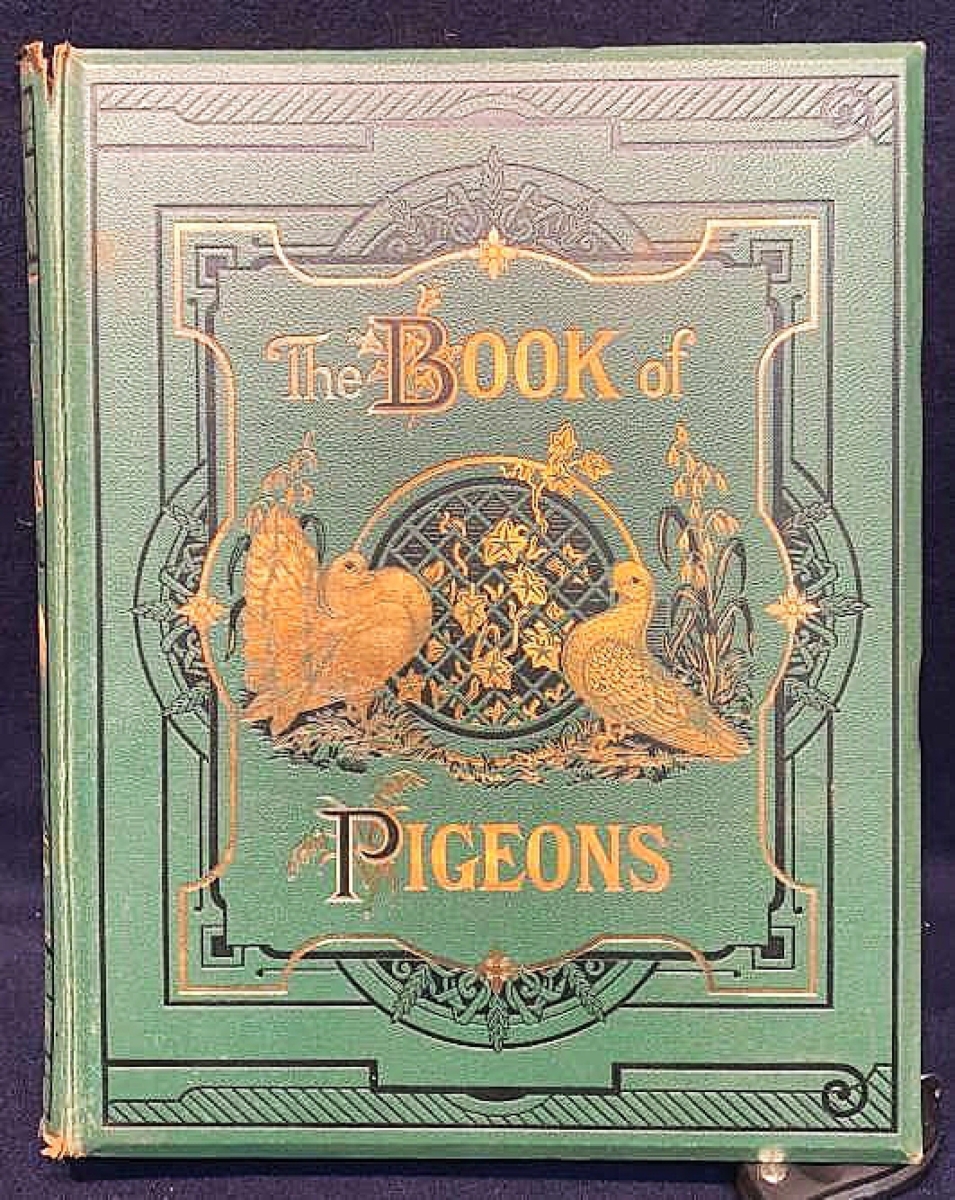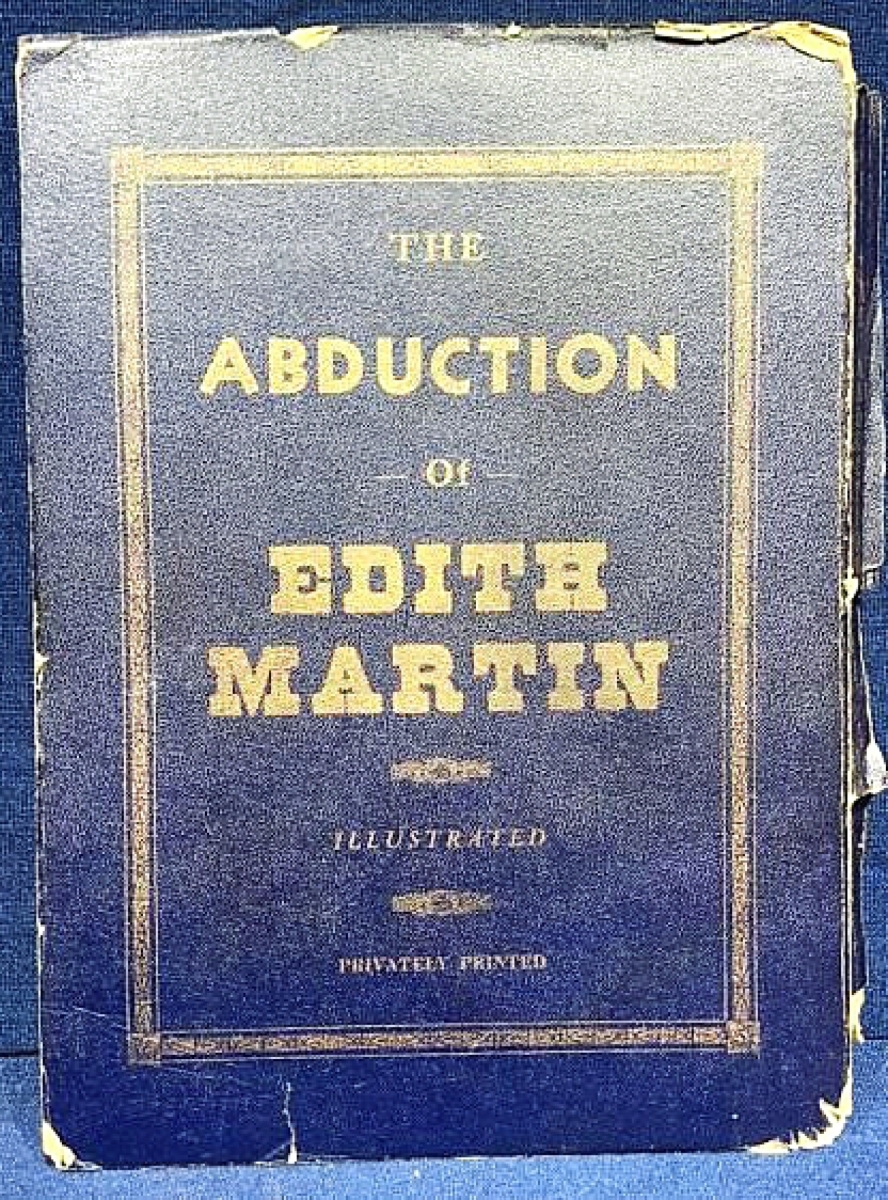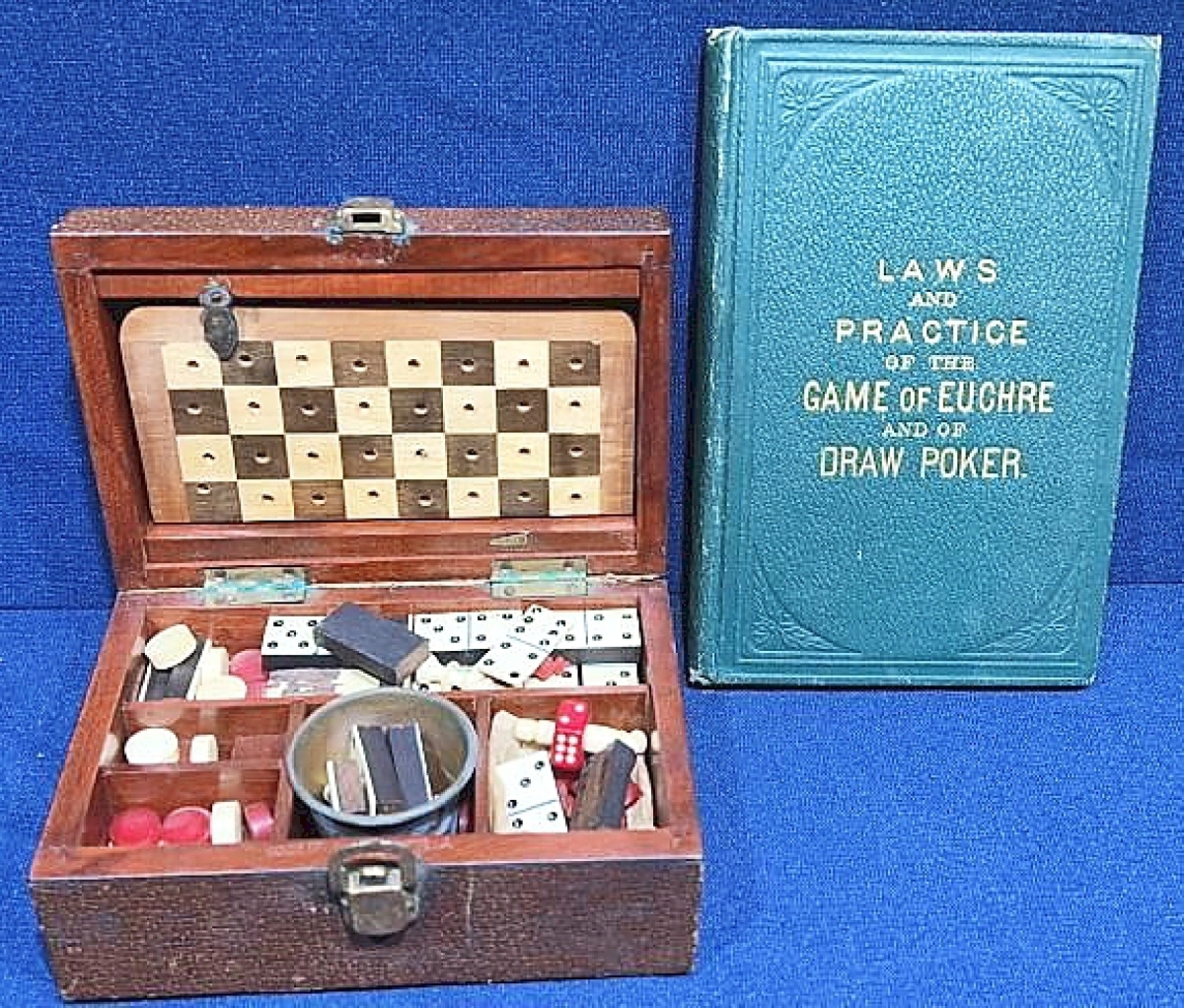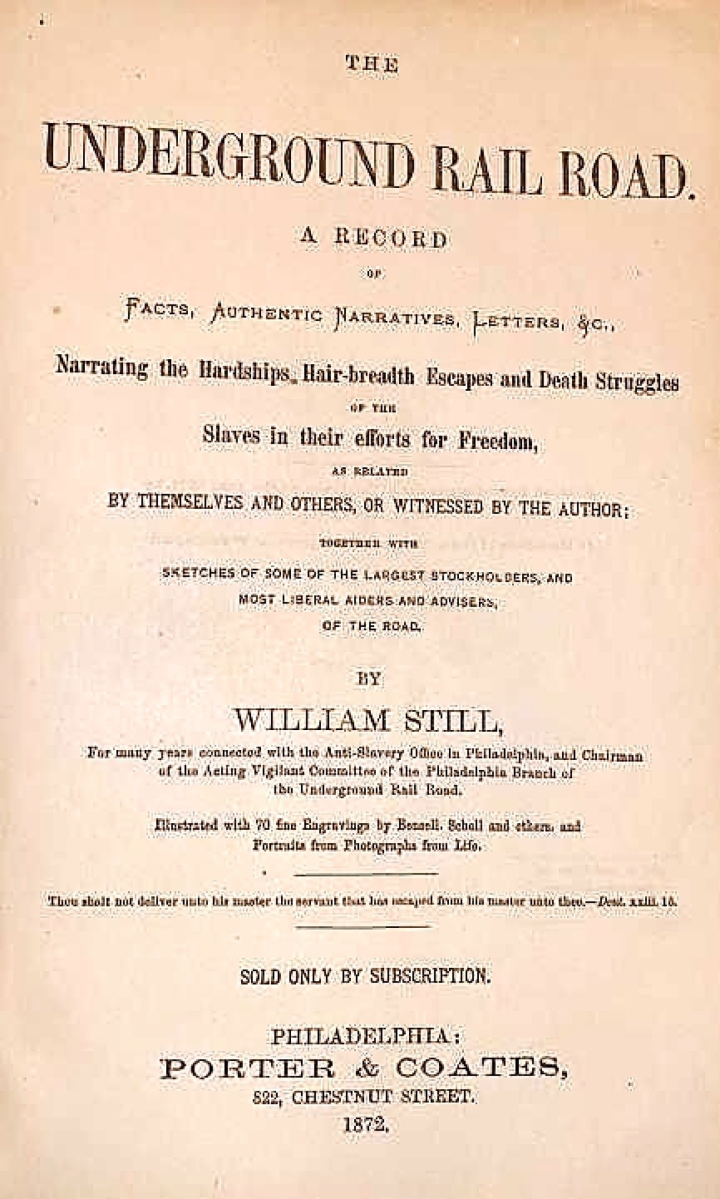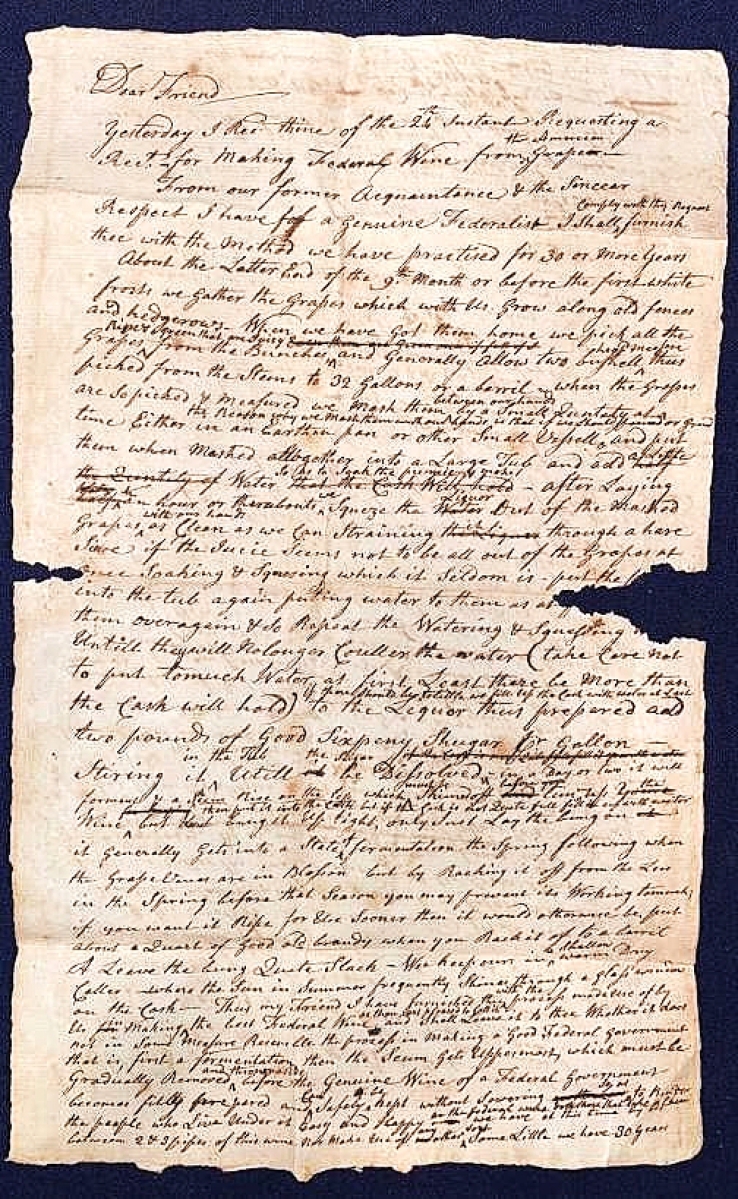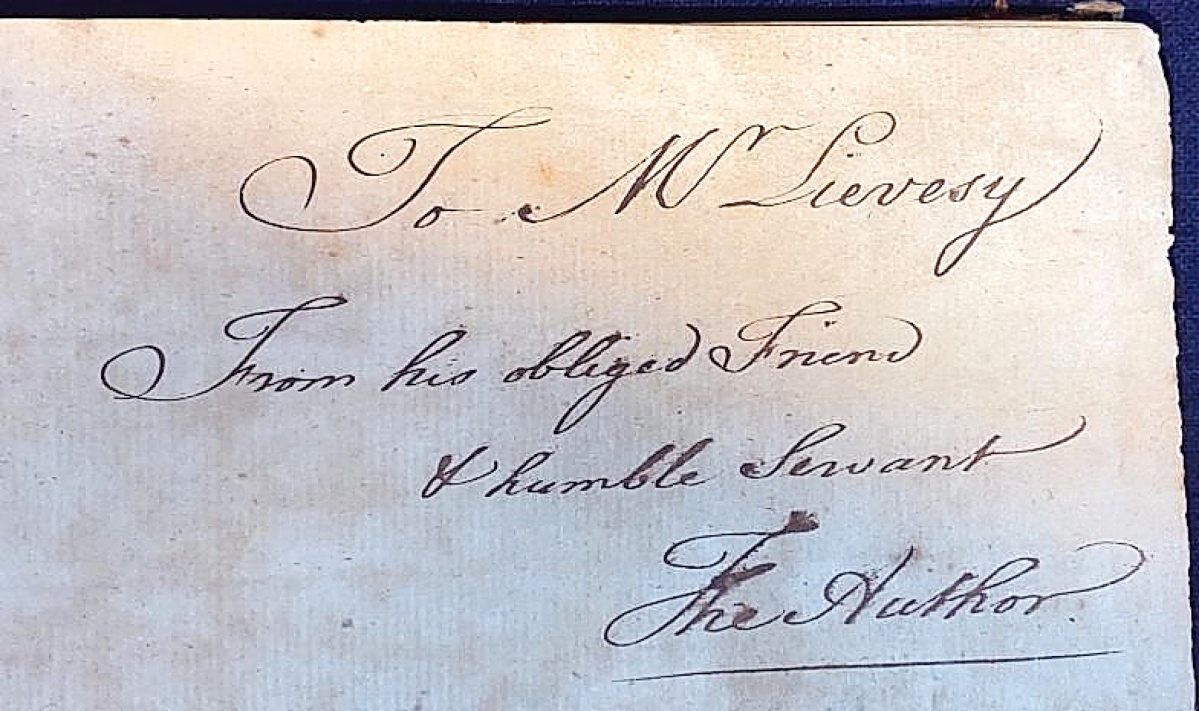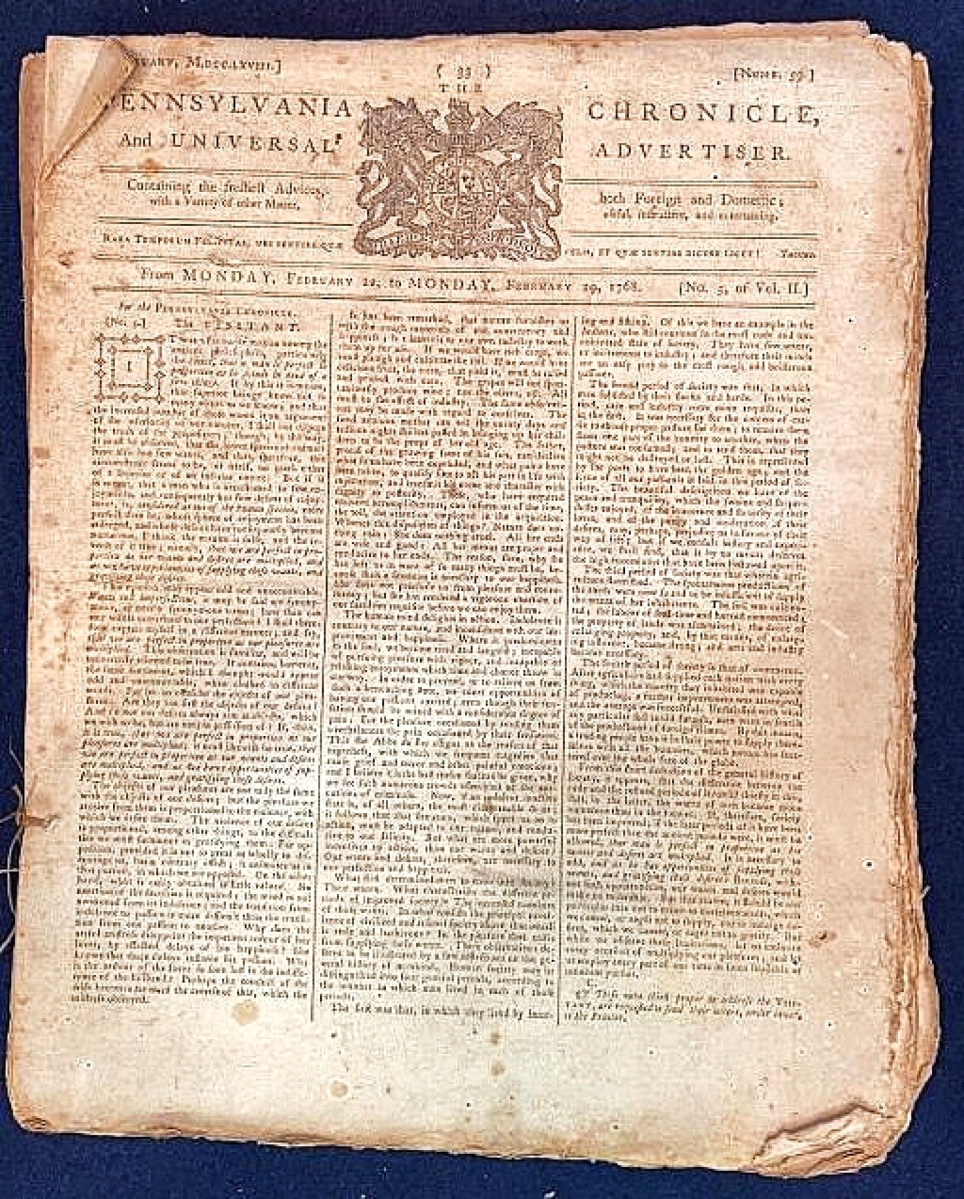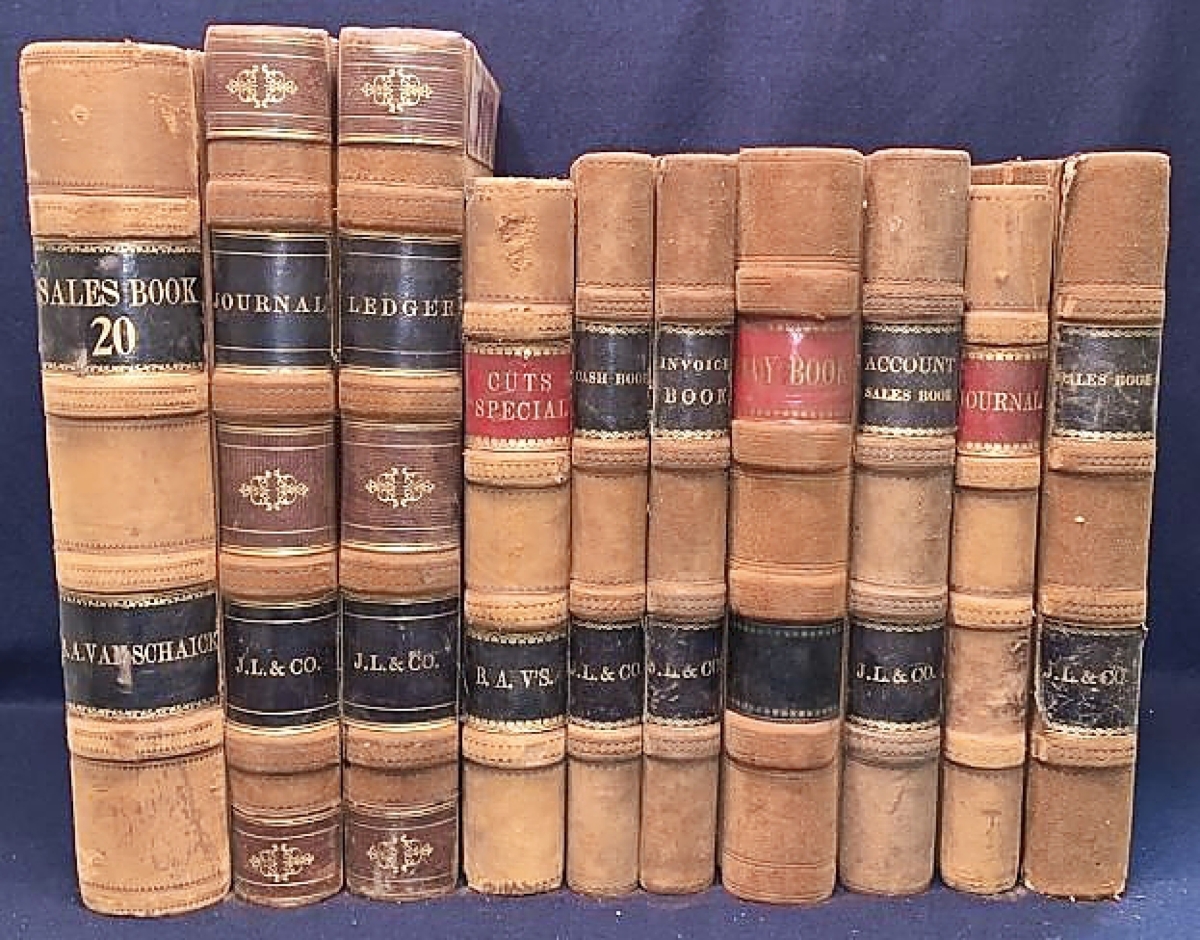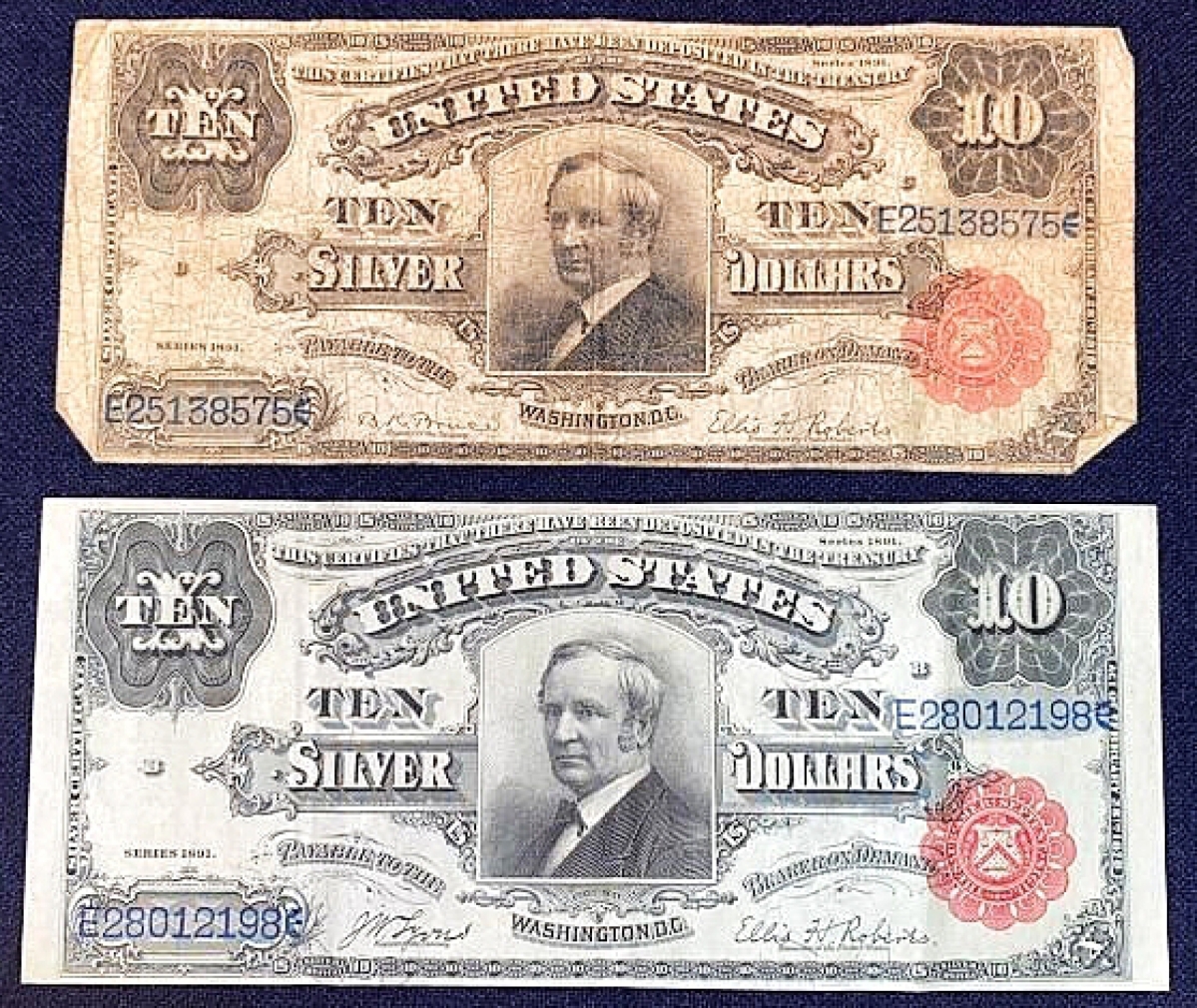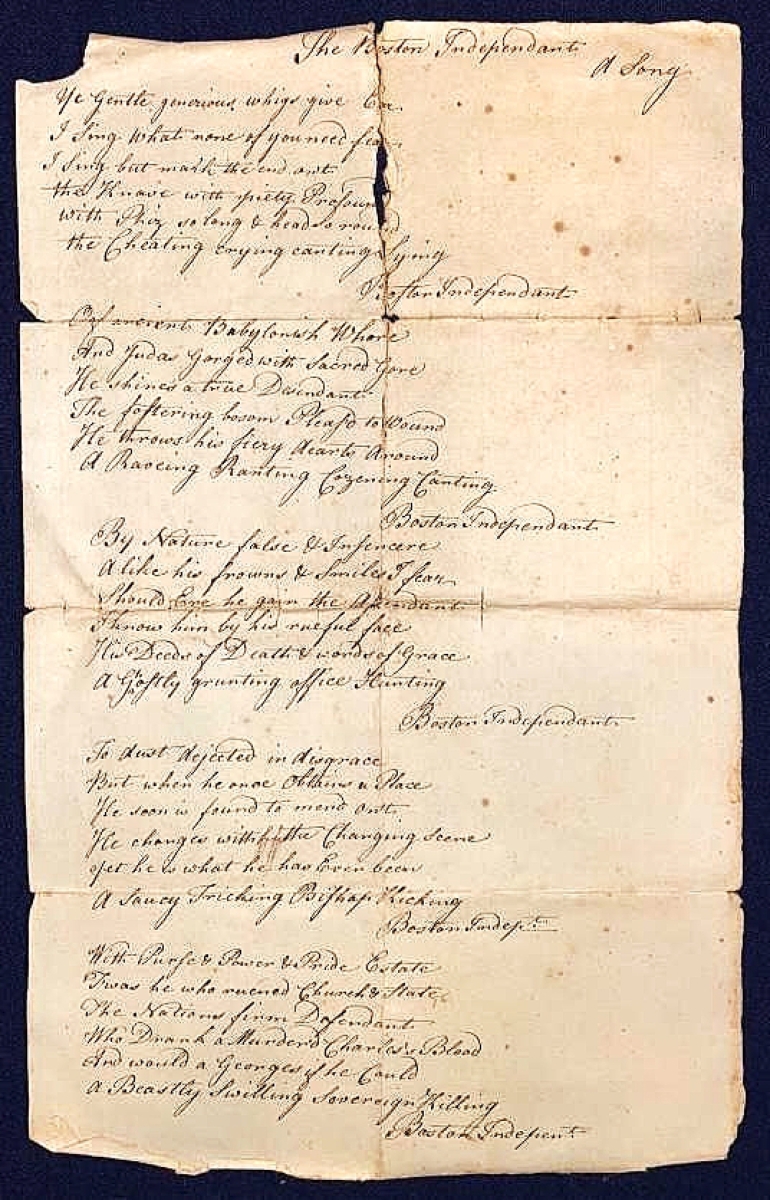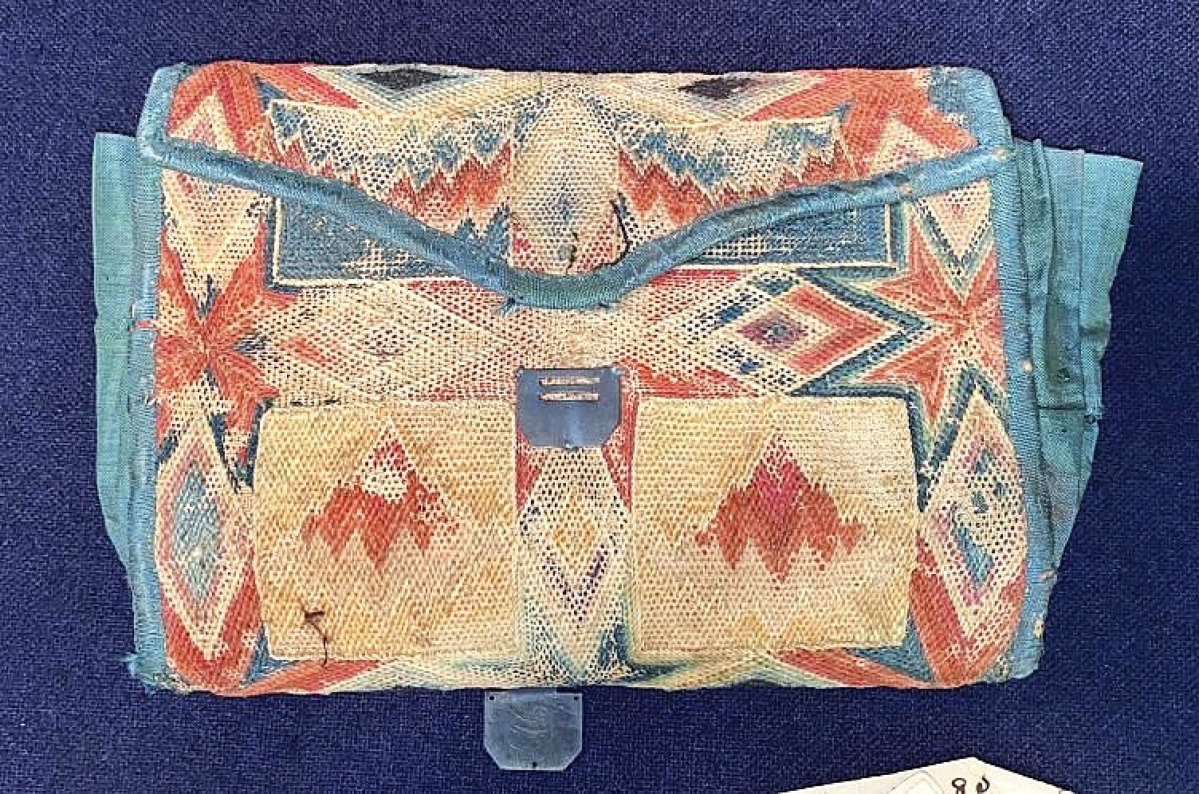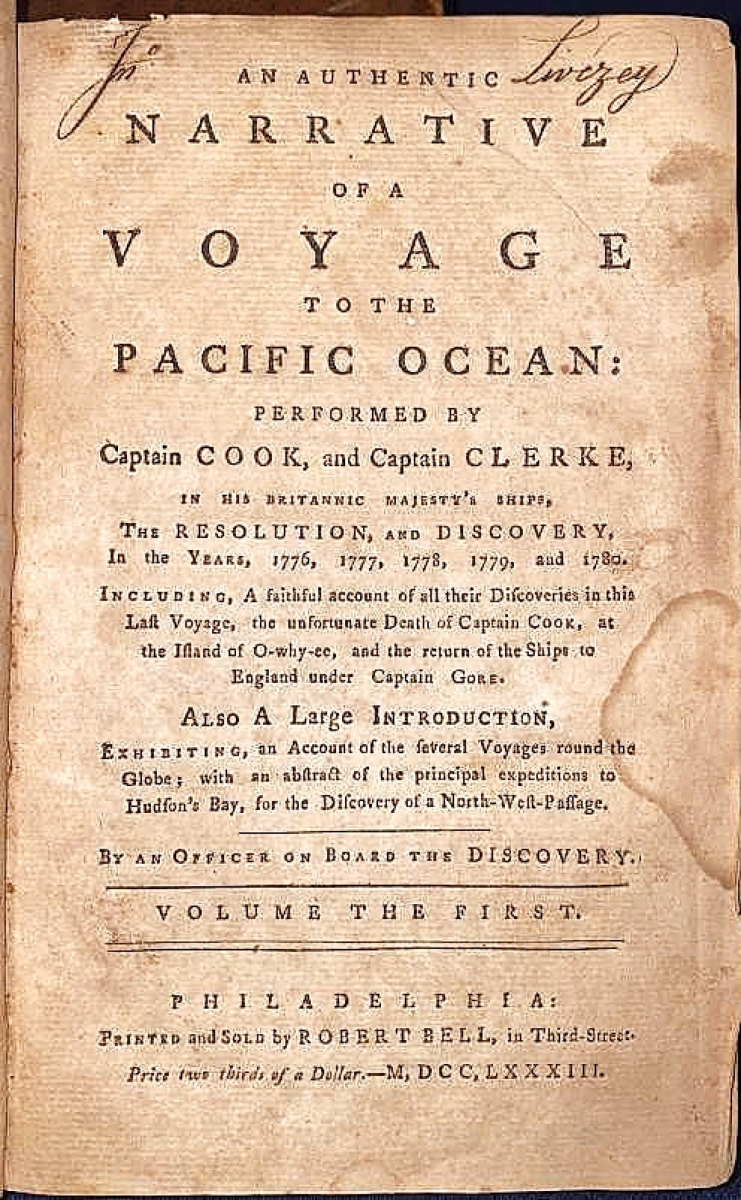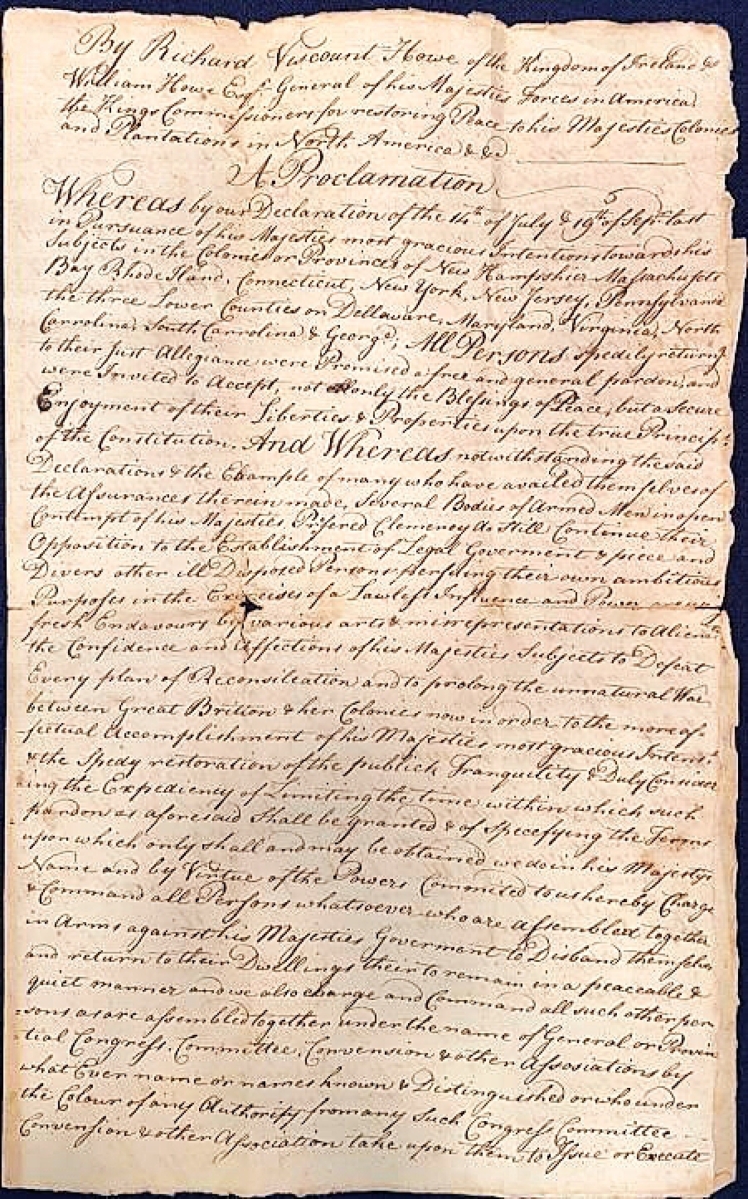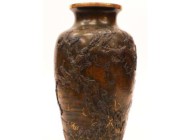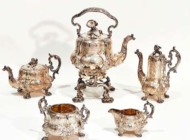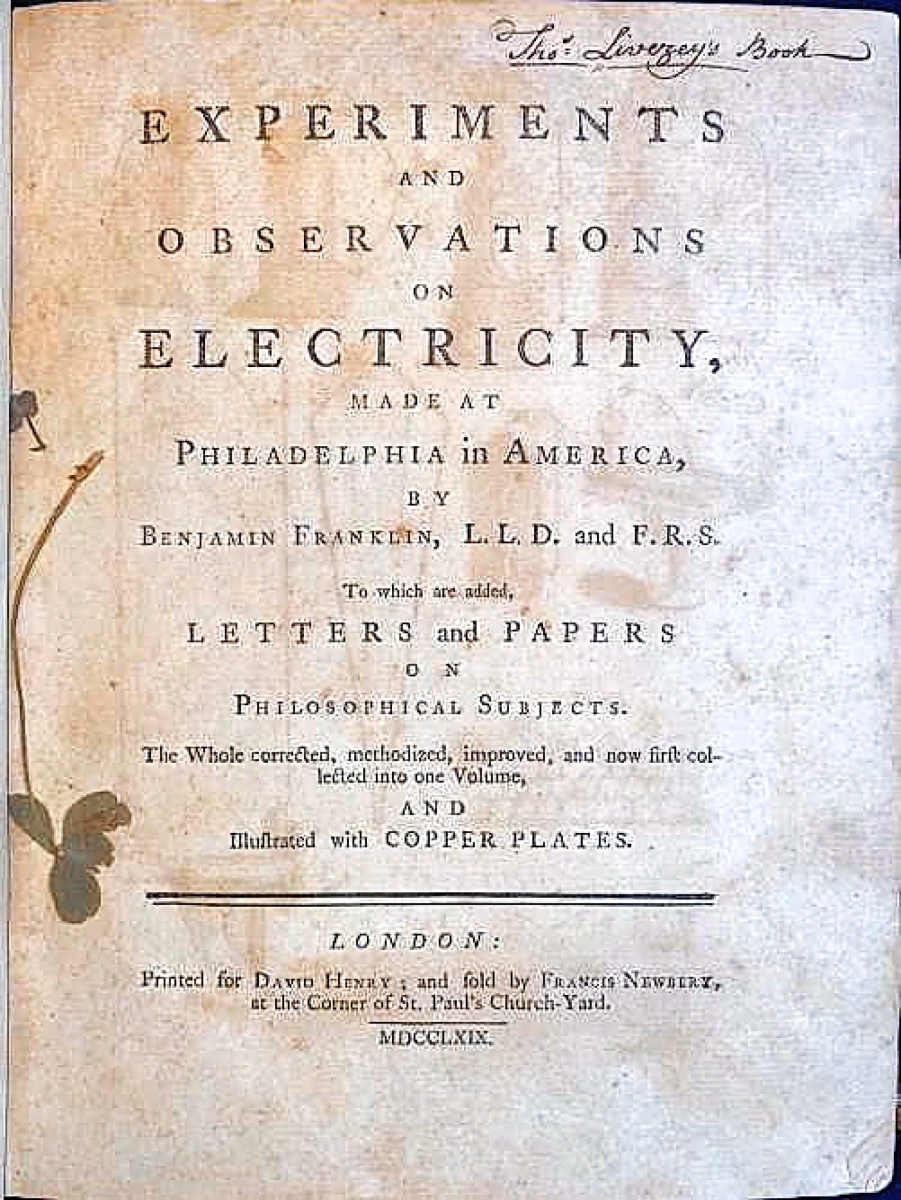
The highlight of the sale was a copy of Benjamin Franklin’s Experiments and Observations on Electricity, which sold for $153,400. This book, published in 1769, was the first hardcover edition containing Franklin’s experiments. It was inscribed by Franklin to “Mr Livesy [sic].” The book would eventually be published in three other languages.
SUDLERSVILLE, MD – Russum’s Furniture Auctioneers has been dispersing belongings of the Livezey and Firth families of Philadelphia and Maryland going back more than 300 years. The firm’s October 9 sale, the third and final, included books and pamphlets, some with Benjamin Franklin imprints – one signed by him and presented to the family – Revolutionary War manuscripts, including several by British General Howe, along with Eighteenth Century manuscript survey maps. Other books and pamphlets in this sale related to William Penn and Quakers, political happenings of the time; there were bound volumes of early Pennsylvania newspapers, more than 150 years of business records and ledgers, Nineteenth Century gold coins and currency, plus numerous other books belonging to the families and reflecting their wide interests.
The highlight of the collection was a 1769 copy of Benjamin Franklin’s Experiments and Observations on Electricity, signed by Franklin and inscribed “To Mr Livezey From His Obliged Friend & Humble Servant, The Author.” It earned $153,400.
The story begins with the first arrival of the Livezey family, about 1683. Part of William Penn’s colony, they were Quakers who settled in the Philadelphia area seeking religious freedom and prosperity and settling on land granted them by Penn – where the family business remained until the 1860s. The significant items in this sale concern Philadelphia merchant flour miller Thomas Livezey (1723-1790). An astute businessman, he was owner of a grist mill on the Wissahickon Creek, said to be the largest in the colonies and eventually a very wealthy man. The milling business continued until 1868 when the city of Philadelphia bought the buildings, some of which remain, and the land destined to become part of Fairmount Park.
In the 1870s, a member of the Firth family married a Livezey and they would, in 1930, move to Maryland, which is where the collection has been for nearly the last 100 years. The importance of the mill, and an example of his place in the society of the day, is that General Washington ordered the destruction of the mills in the area when British troops occupied Philadelphia during 1778 and 1779, but Livezey’s mill was left intact. The original mill burned in 1793, and when rebuilt, the only building of comparable size was the Pennsylvania Statehouse, now known as Independence Hall. (For those interested in the operation of Livezey’s mill, and milling in Colonial America, see Herbert Lapp’s in-depth articles published in the journal of the Early American Industries Association, 2010-2012.)
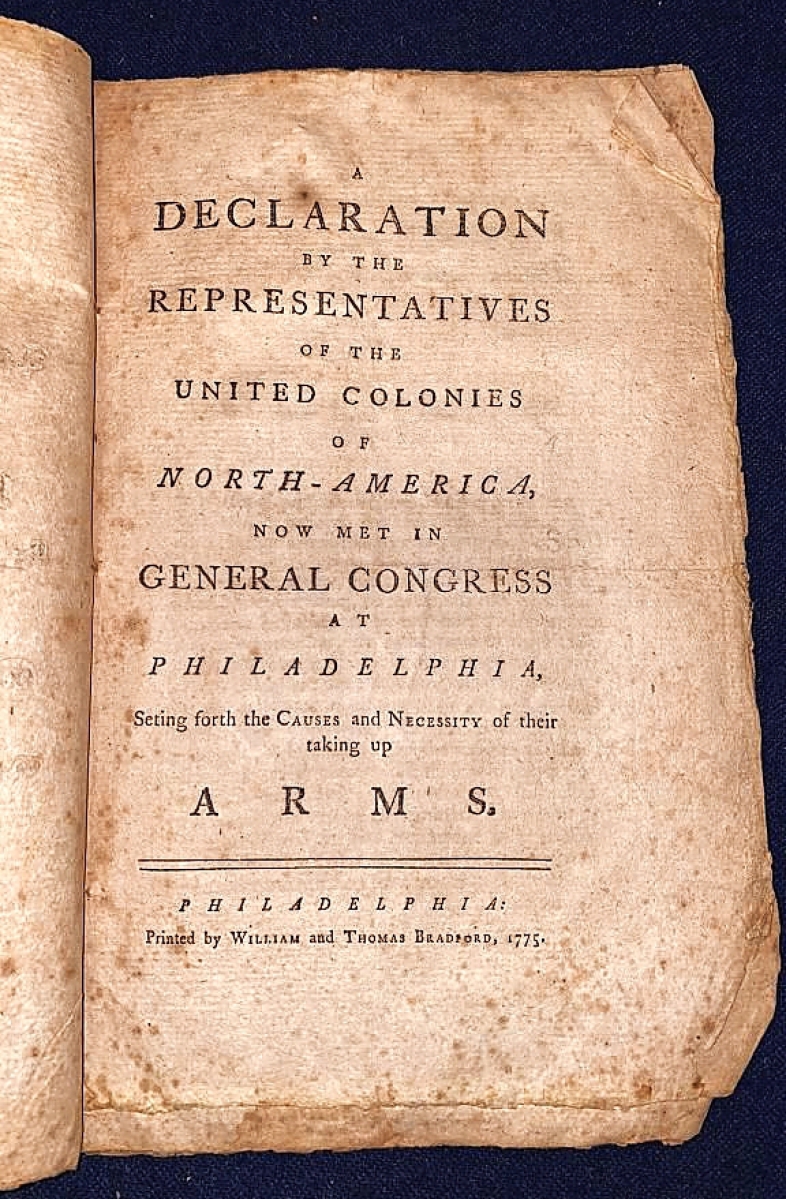
The second highest price of the sale, $49,560, was achieved by A Declaration by the Representatives of the United Colonies of North America, Now Met in General Congress at Philadelphia, a pamphlet published in 1775. It had been drafted by Thomas Jefferson and rewritten by John Dickinson.
Livezey was friendly with Benjamin Franklin and other influential men of his time. He was politically active, elected to the state Assembly from Philadelphia County in 1765 and was immediately made a member of the committee of correspondence; he served in the assembly until 1771. As America moved towards war, his Quaker belief that American colonists were citizens of Great Britain required that he step back, which he did, concentrating on his business. Fortunately, from the point of view of historians, collectors and dealers is the fact that members of the family appear to have retained nearly every book, document, ledger and manuscript that came their way, thus accumulating an invaluable record of their business, politics of the period, and the world in which they lived.
Some of the material has, over the years, been acquired by institutional libraries, but most had been retained and was included in this sale. In addition to the important signed Franklin book, there were others printed by Franklin, who was originally a printer in Philadelphia. Thomas Livezey probably met Ben Franklin when both contributed to the founding of the Pennsylvania Hospital in 1754. They would correspond often on a variety of matters, from politics to wine-making.
The star of the sale was the above-mentioned hardcover copy of the 1769 edition of Franklin’s Experiments and Observations on Electricity. The book consisted of a series of letters Franklin had exchanged with members of the Royal Society of London, discussing his experiments with electricity and some were first published, in pamphlet form, in 1751. That was soon followed by expanded publications with Franklin’s continuing experiments, also in pamphlet form, and by 1769 it had expanded to 469 pages and was published in London as a hard-cover book.
Franklin’s interest in electricity dated back to 1743, and various editions of this book would eventually appear in French, German, Italian and Latin. It was considered one of the most important scientific books of the Eighteenth Century.
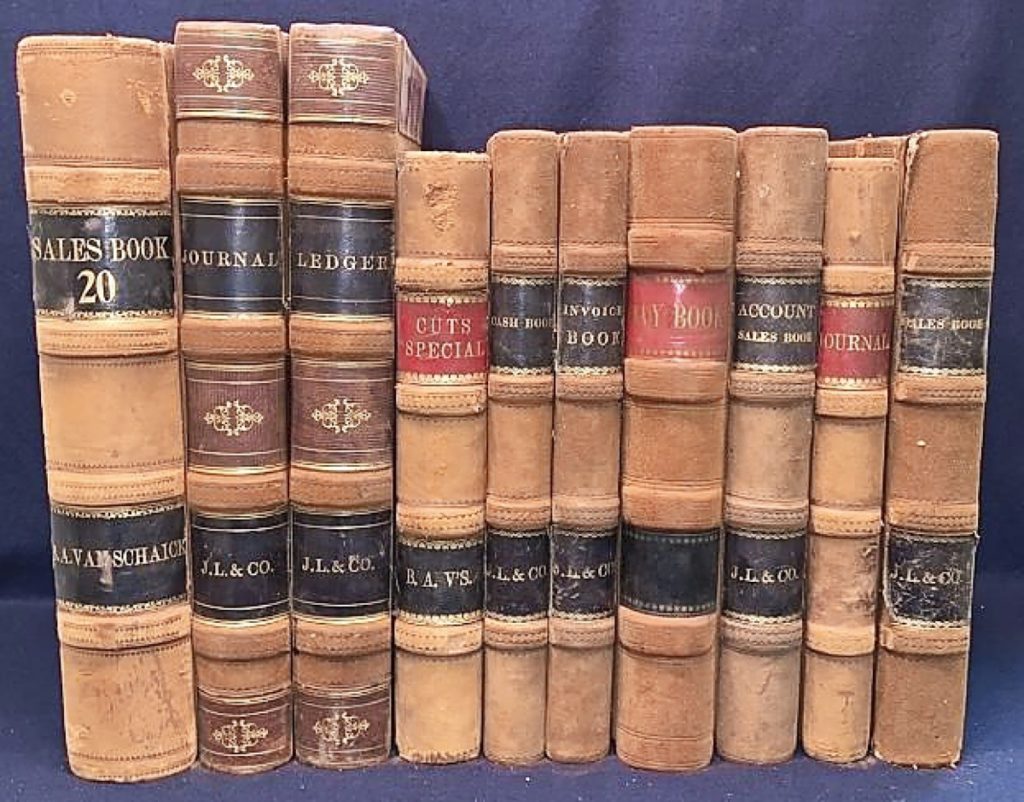
One lot included 10 ledgers kept by John Livezey, son of Thomas Livezey. One of the ledgers contained a room-by-room appraisal of the furnishing of a large home. Others included day-to-day business transactions of the business in the 1860s and 1870s. The lot brought $560.
At the time, Franklin owned and operated a printing office in Philadelphia. By about 1746 he had turned over most of the duties of running the business to his partner David Hall so he could devote more time to his experiments and political causes. The sale included six books and pamphlets printed by Franklin, including Some Considerations To The Present State of The Christian Religion… by Alexander Arscot, published in 1731, which sold for $7,080.
The earliest publication in the sale was Refreshing drops, and scorching vials, a religious pamphlet by Christopher Goad, published in London in 1653. Considered an unimportant, but still early, publication today, it sold for $354. The second highest price of the sale, $49,560, was earned by A Declaration by the Representatives of the United Colonies of North America, Now Met in General Congress at Philadelphia. It was a pamphlet drafted by Thomas Jefferson and rewritten by John Dickinson. In it, representatives of the 13 colonies resolved that while a “war of independence could still be avoided, colonial Americans would sooner die than continue to live in slavery.” It was approved by Congress on July 6, 1775, and published in Philadelphia. Other political items were also sought-after. A group of four pamphlets, including Thoughts on Taxation In A Letter To A Friend by Timothy Davis, a Quaker, published in 1784, sold for $10,325. A copy of this publication is in the Bodleian Library.
After the sale, J.R. Russum said, “This was the last sale of the Livezey and Firth family belongings. It was an amazing collection of stuff, most of which hadn’t been touched in decades. We’re quite pleased with this unreserved sale, which had so much material, representing so many interests. It grossed more than $550,000. I doubt that we’ll see another collection like this one.”
Prices given include the buyer’s premium as stated by the auction house. For information, www.russumsfurniture.hibid.com or 410-708-4676.

